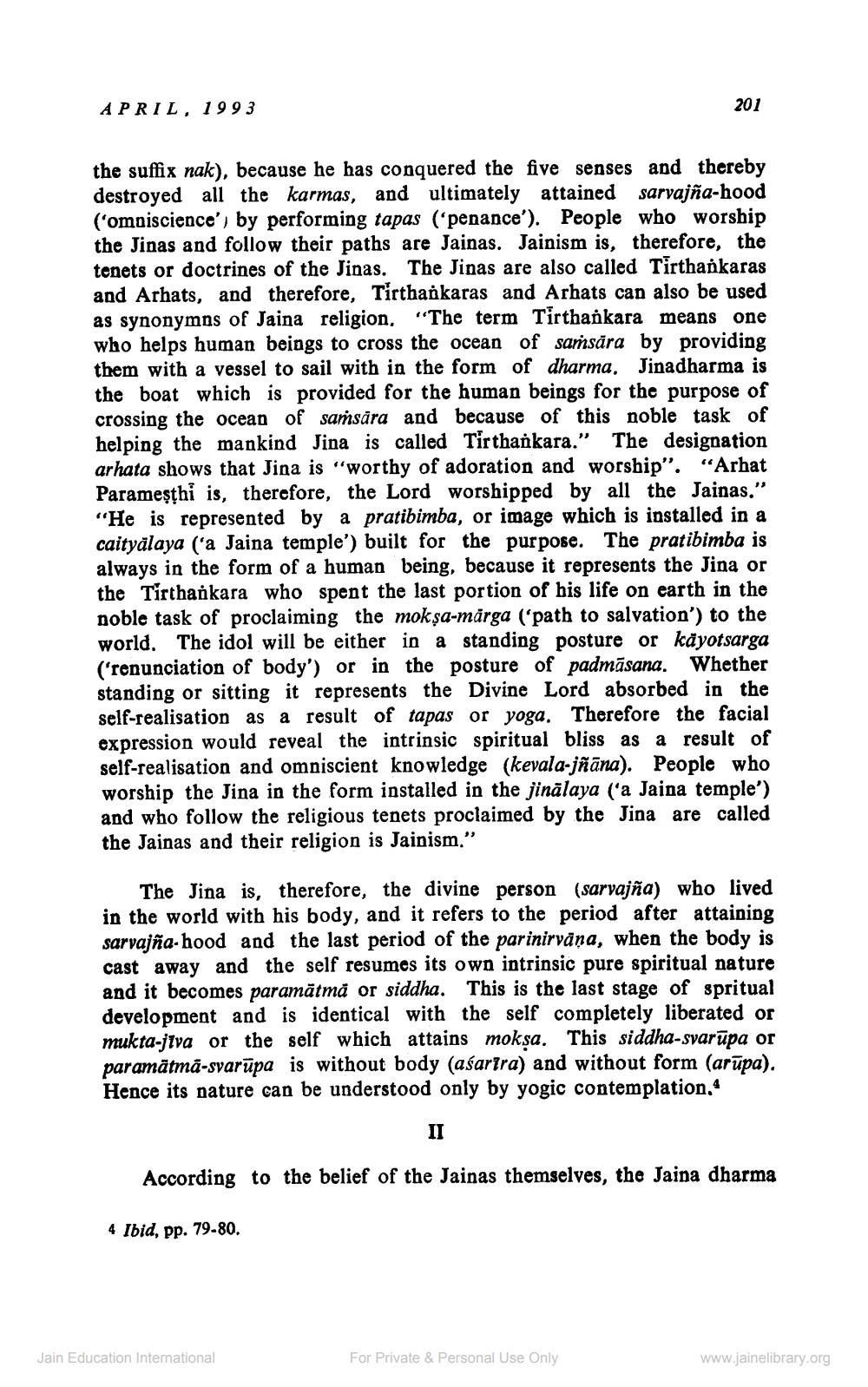________________
APRIL, 1993
the suffix nak), because he has conquered the five senses and thereby destroyed all the karmas, and ultimately attained sarvajña-hood ('omniscience') by performing tapas ('penance'). People who worship the Jinas and follow their paths are Jainas. Jainism is, therefore, the tenets or doctrines of the Jinas. The Jinas are also called Tirthankaras and Arhats, and therefore, Tirthankaras and Arhats can also be used as synonymns of Jaina religion. "The term Tirthankara means one who helps human beings to cross the ocean of samsara by providing them with a vessel to sail with in the form of dharma, Jinadharma is the boat which is provided for the human beings for the purpose of crossing the ocean of samsära and because of this noble task of helping the mankind Jina is called Tirthankara." The designation arhata shows that Jina is "worthy of adoration and worship". "Arhat Parameşthi is, therefore, the Lord worshipped by all the Jainas.' "He is represented by a pratibimba, or image which is installed in a caityalaya ('a Jaina temple') built for the purpose. The pratibimba is always in the form of a human being, because it represents the Jina or the Tirthankara who spent the last portion of his life on earth in the noble task of proclaiming the mokṣa-märga ('path to salvation') to the world. The idol will be either in a standing posture or käyotsarga ('renunciation of body') or in the posture of padmasana. Whether standing or sitting it represents the Divine Lord absorbed in the self-realisation as a result of tapas or yoga. Therefore the facial expression would reveal the intrinsic spiritual bliss as a result of self-realisation and omniscient knowledge (kevala-jñāna). People who worship the Jina in the form installed in the jinālaya ('a Jaina temple') and who follow the religious tenets proclaimed by the Jina are called the Jainas and their religion is Jainism."
The Jina is, therefore, the divine person (sarvajña) who lived in the world with his body, and it refers to the period after attaining sarvajña-hood and the last period of the parinirvana, when the body is cast away and the self resumes its own intrinsic pure spiritual nature and it becomes paramātmā or siddha. This is the last stage of spritual development and is identical with the self completely liberated or mukta-jiva or the self which attains mokṣa. This siddha-svarupa or paramātmā-svarupa is without body (asarira) and without form (arūpa). Hence its nature can be understood only by yogic contemplation."
201
II
Jain Education International
According to the belief of the Jainas themselves, the Jaina dharma
4 Ibid, pp. 79-80.
For Private & Personal Use Only
www.jainelibrary.org




